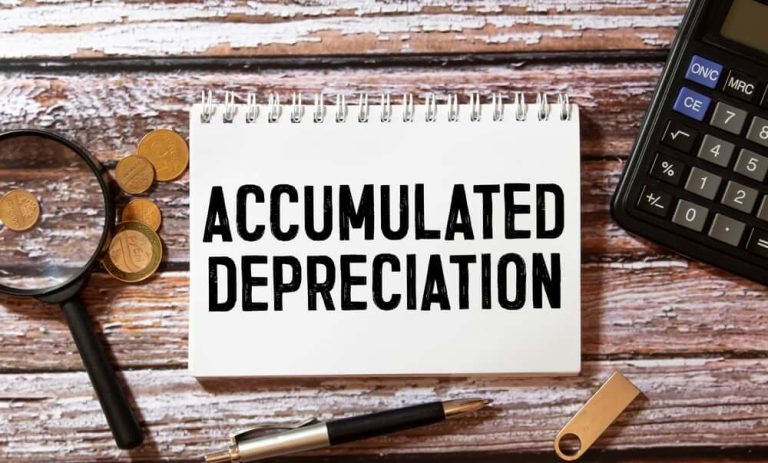Main take:
- Accumulated depreciation is crucial to understanding how assets lose value over time, which helps in financial planning.
- Companies rely on it to determine asset replacement timing and budget, taking into account the age and value of the assets.
- Different methods of calculating accumulated depreciation, such as straight line and units of production, affect its presentation in financial reports.
- Understanding this type of depreciation is essential for assessing a company's financial situation and planning for the future.
Have you ever thought about accumulated depreciation and how to calculate it effectively? Accumulated depreciation is a crucial accounting measure to evaluate the depreciation of tangible assets over some time.
Improving how companies report asset impairment enhances financial transparency and improves the effectiveness of data for predictive analysis.
Knowing how asset depreciation works is important for making smart choices. It helps you understand the value of assets and how it affects annual expenses and asset records.
Let's get more information about this and how to calculate it, shall we?
Understanding accumulated depreciation
Assets lose value over time. When a company acquires it, it is given a value based on how long it is expected to last. This value decreases over time.
In essence, accumulated depreciation represents the total amount of these accumulated depreciations up to the current period.
This information is essential to assessing the value of an asset and affects financial reporting and tax calculations.
How does accumulated depreciation work in practice?
When a company buys something, they write down its initial value, how long it will be used, and its salvage value. When something loses value, the company records the accumulated depreciation in its ledger.
They often use methods such as straight-line depreciation to track this depreciation over time.
Accumulated depreciation shows how much an asset has depreciated over time, providing insight into its current financial condition.
Businesses typically use accumulated depreciation to accurately track the finances of assets such as vehicles, machinery, computers, buildings, office equipment, and furniture.
The importance of tracking accumulated consumption

Monitoring accumulated depreciation is crucial because it shows how much an important asset is worth financially. This helps plan ahead and makes business planning easier.
This special depreciation helps decide when to replace assets and budget for replacements, taking resale value into account.
Clear financial records improve understanding of a company's overall health. Spreading out asset costs over time prevents profits from falling too low in the year of purchase.
Conversely, accelerating asset depreciation can lead to lower taxes in a company's early years.
How do accountants calculate accumulated depreciation?
When you study accounting, you will find ways to calculate accumulated depreciation. These methods spread the cost of an asset over its useful life. They include straight line, tapering, and double tapering techniques.
The straight-line method calculates annual depreciation. This is done by subtracting the salvage value from the cost of the asset. This result is then divided by the useful life of the asset.
This calculation gives you the annual depreciation. Adding these amounts provides the total accumulated depreciation over the life of the asset.
What is this approach like?
This method helps companies align costs with the useful life of their assets, which helps in financial planning.
Using a units of production or depreciation schedule can track the use of assets over an accounting period. It provides a more accurate calculation of depreciation, and is often included in financial statements to show the financial impact of an asset.
What is the annual accumulated depreciation formula?
The formula for calculating annual depreciation using this method is:
Annual depreciation = (cost of initial assets – residual value) / expected years of use
Therefore, accumulated depreciation equals annual depreciation multiplied by the years of operation of the asset.
Example of the straight line method:
Imagine that your company purchases office equipment for $200,000. After 8 years of use, we expect it to be worth $80,000.
- Annual depreciation is $120,000 divided over 8 years, producing $15,000 per year.
Thus, four years after acquiring the equipment, the accumulated depreciation amounts to:
- Four years multiplied by $15,000 equals $60,000.
At this point, the assets are worth $200,000 minus $60,000, resulting in $140,000.
Explore diminishing and double-decreasing techniques
- Assets lose value over time.
- It accelerates how quickly assets lose value in the early years.
- The IRS rules are the Adjusted Cost Recovery Depreciation System (MACRS). Every year, assets lose less value.
- Machinery, vehicles, computers, furniture, and buildings can have this type of depreciation. Each has a set time for how long it can lose value, which is set by the IRS.
Mobility in consumption: a simple comparison

Depreciation expense represents the gradual decline in the value of an asset over time, decreasing gradually throughout its life.
In contrast, accumulated depreciation includes the sum of annual depreciation expenses, which affects asset accounts.
This total affects financial records, balance sheets and taxes, showing how much the value of the asset has decreased.
Determining how much money a company holds involves changing asset values, financial reports, and taxes.
Understand the impact of proportionality on asset depreciation reporting
Proration adjusts depreciation claims based on the period of ownership of the asset, which affects the financial statements and tax implications.
For example, purchasing an asset mid-year reduces the annual depreciation claim.
How is accumulated depreciation classified on the balance sheet?
Accumulated depreciation, a negative asset listed on the balance sheet, reduces the value of the corresponding asset.
When you check the asset ledger, you will see the original purchase cost and accumulated depreciation.
We calculate the net asset value by subtracting the accumulated depreciation from the original cost. This change affects retained earnings by adjusting the net asset value in the accounts.
This type of depreciation appears within fixed assets on the balance sheet, which indicates a decline in the value of the asset. This reduction is often due to methods such as straight-line depreciation and the useful life of the asset.
minimum
Understanding accumulated depreciation is important for asset management and planning for the future. Tracking depreciation helps you make decisions about asset replacement and budgeting.
Different calculation methods help keep finances clear. Financial statements show this type of depreciation, making it easier to see how assets impact finances.
Ultimately, understanding accumulated depreciation helps keep finances stable and ensures long-term success.

